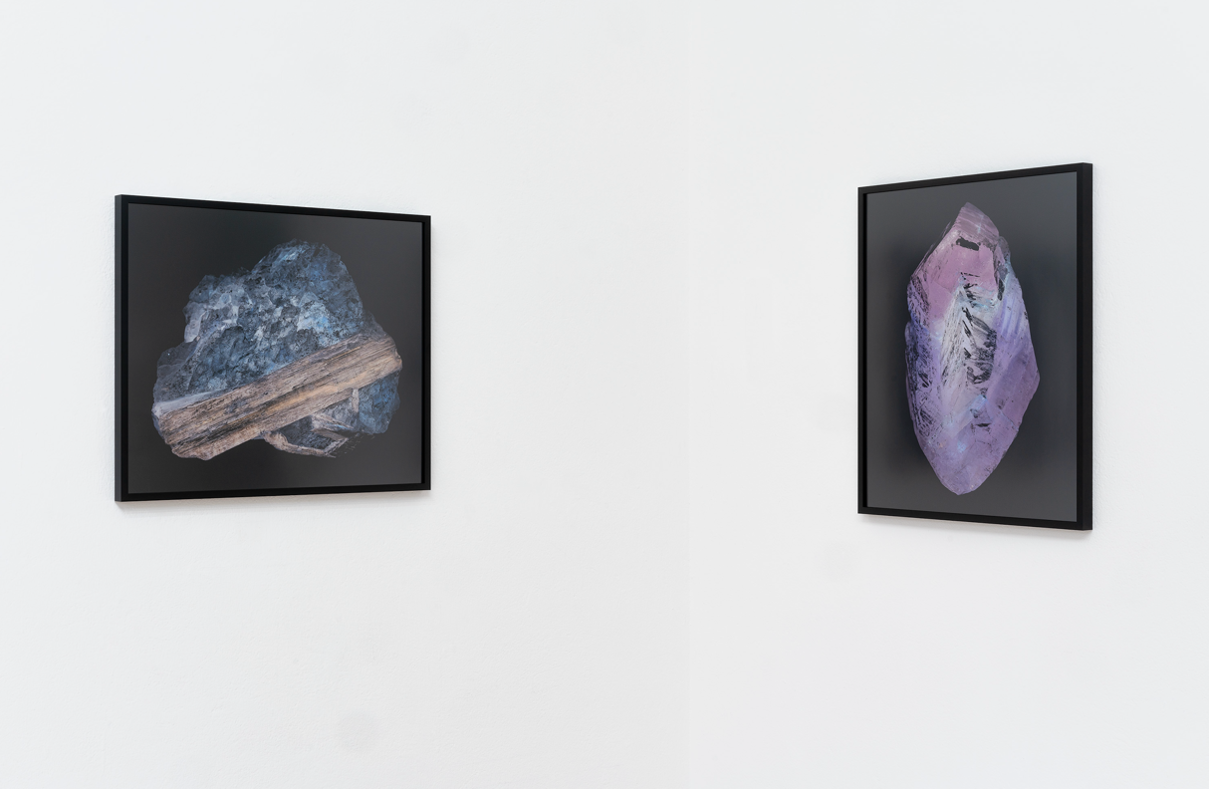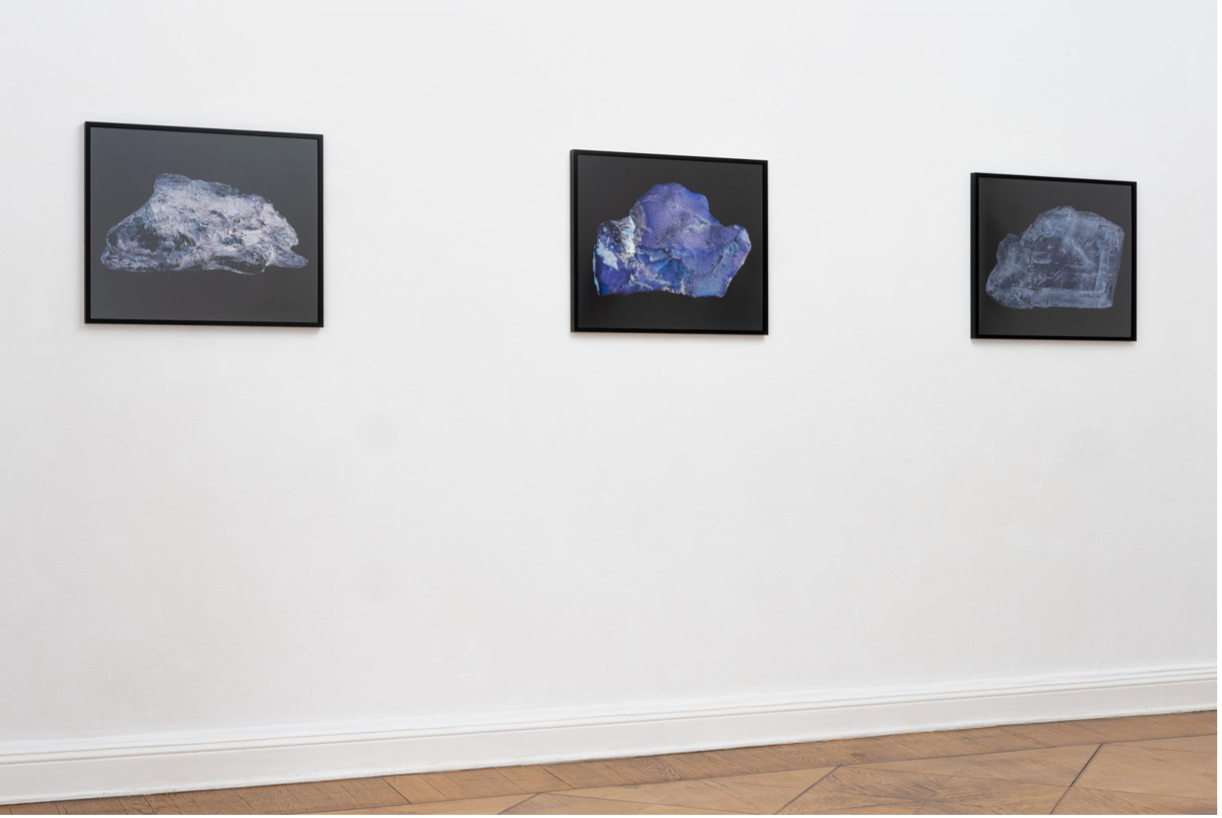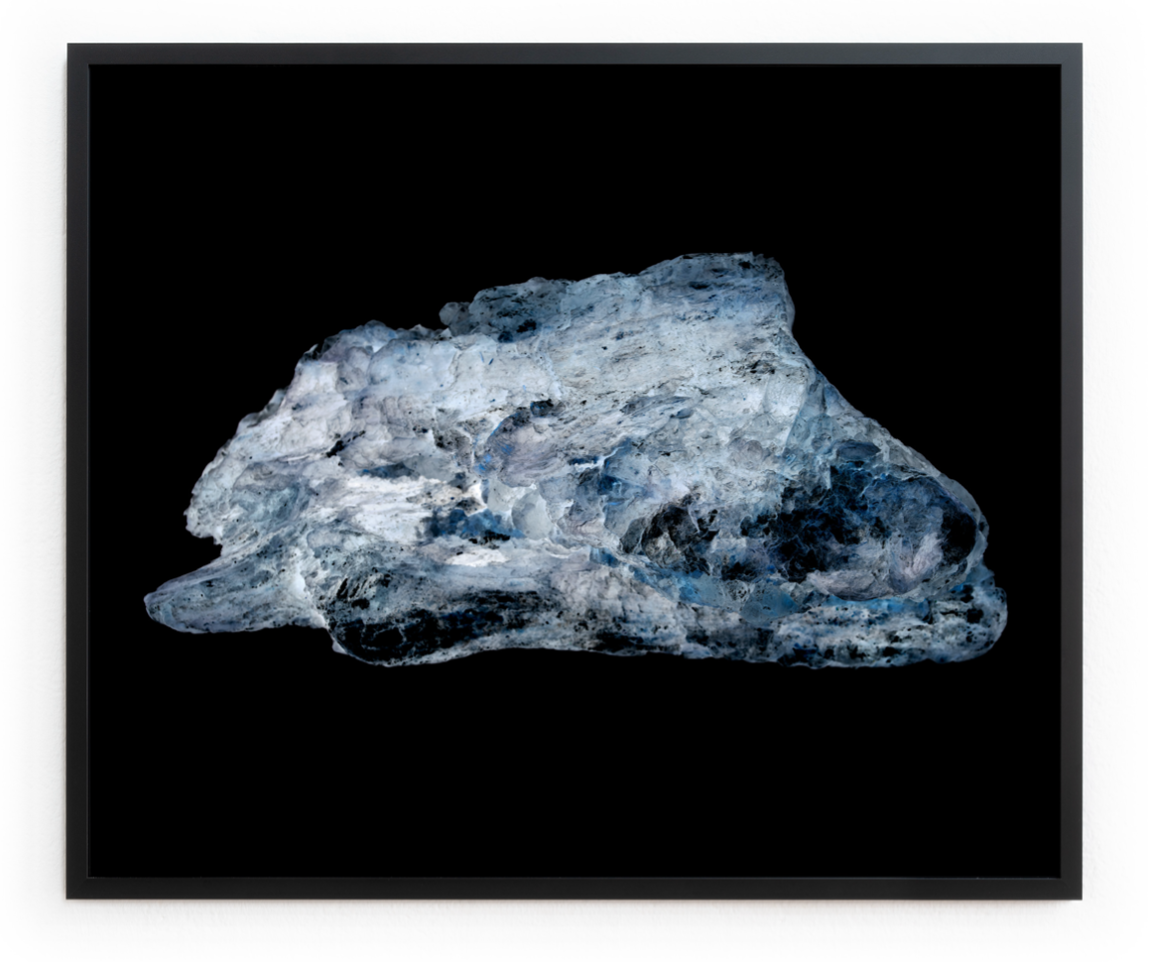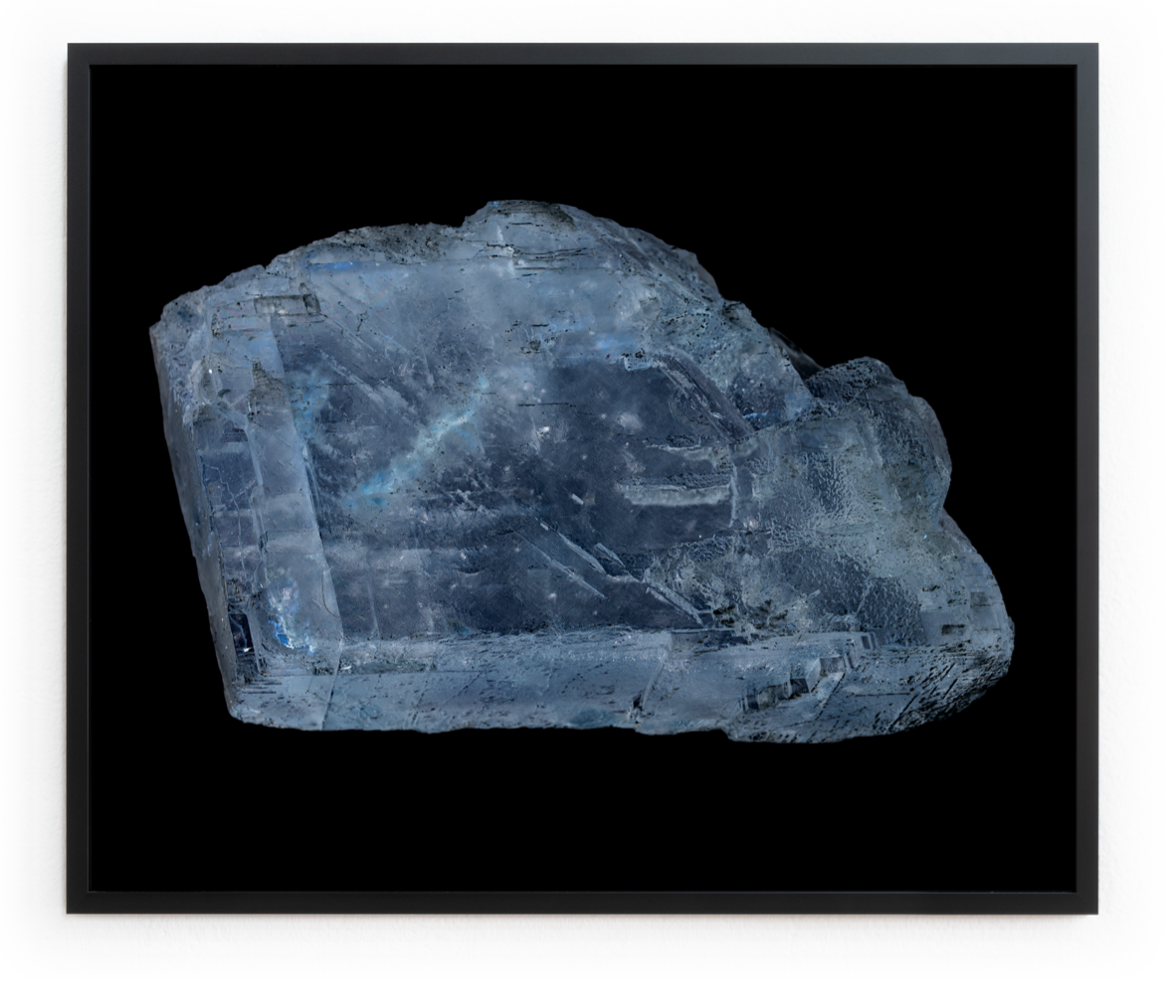From April until June 2021,
Sascha Herrmann was resident at
Residency@Thinking Tools / Morpho
For his residency at the Thinking Tools research group, the German photographer Sascha Herrmann developed the project "Glimmer”. With this work Herrmann directs his glance towards the mineral world. The focus – in line with the medium of photography – lies on reflection and refraction. Herrmann’s series of C-prints is the result of spectral analysis, in which different stones have been illuminated by various light sources. A combination of microscopic techniques, photographic contact prints and short- and long-wave UV light makes visible the rocks’ refractive properties, such as opalescence and fluorescence for instance. Some of these properties are named after the rocks on which these properties were observed, and, conversely, some rocks are named after the particular light properties that these rocks exhibit. There is mica, a stone that gleams silvery, which in the Middle Ages has been sold as precious metal. Or the Iceland spar, that can polarize light—double it, that is—which is why it is used in several optical applications and also, of course, in photography. The artist decided to depict all the rocks - kyanite and opal, emerald and a moonstone - in front of a black backdrop. The resulting images therefore function as photograms, i.e. as negatives. The stones are put before an illuminated background and lightened from the front by a spotlight. This specific process of illumination is important because they divulge their features an properties only in light: they glow, they reflect and refract, they gleam and shine.
The series “Glimmer” was presented at the Galerie Anton Janizewski in Berlin from May 22th to the 3rd of July 2021.
From 2008 to 2015, Sascha Herrmann studied at the Academy of Fine Arts Leipzig, the Kunstakademie Düsseldorf, and the LUCA School of Arts Brussels. His artistic work over the years has often arisen in cooperation with research and educational institutions, including the Caspar-David-Friedrich-Institut of the University of Greifswald, the Institute for Mathematics at the Martin Luther Univer- sity of Halle-Wittenberg, the Leibniz Institute for Tropospheric Research in Leipzig, the Technische Sammlungen Dresden and the Deutsches Historisches Museum in Berlin. In his exhibitions and publications, he collaborates with archivists, musicians, theorists, scientists and other artists. He lives and works in Berlin.








